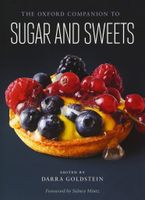Advertisement
Modern Cheesecakes
Published 2015
Cheesecakes are popular throughout the world, made with whatever soft cheese is available. For over a thousand years, young white cheeses have been employed in making cheesecakes. Examples include Anari in Cyprus (made from sheep’s milk or a mixture of sheep’s, goat’s, and cow’s milk), Lor in Turkey (sheep’s or cow’s whey), Manouri or Myzithra in Greece (sheep’s, goat’s, or cow’s milk), ricotta in Italy (cow’s, sheep’s, goat’s, or water buffalo’s whey), Brocciu in Corsica (sheep’s or goat’s whey and milk), Urdă in Romania (sheep’s or goat’s whey), Quark in Germany and the Netherlands (cow’s milk), and tvorog in Russia and Poland (cow’s milk). Cheesecakes are prevalent throughout Eastern Europe: the glory of the Russian Easter table is the pyramidal paskha, rich with tvorog, sour cream, heavy cream, and butter; and sernik (cheesecake) is so popular in Poland that it is regarded as a national dish. Sernik may be baked or unbaked with the addition of poppy seeds or raisins, and it is sometimes topped with fruit and jam, poppy seeds, or chocolate. Jews who emigrated from Central and Eastern Europe to the United States, Western Europe, and Great Britain retained a particular affection for cheesecakes, which are traditional for the festival of Shavuot that celebrates the giving of the Torah to the Jews on Mount Sinai. See judaism.


